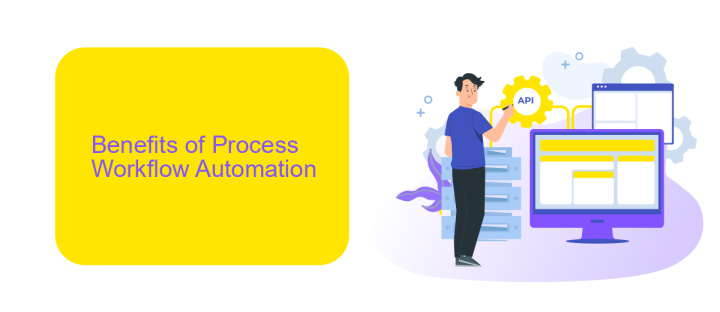Process Workflow Automation
Process workflow automation is revolutionizing the way businesses operate by streamlining tasks and enhancing efficiency. By leveraging advanced technologies like AI and machine learning, organizations can automate repetitive processes, reduce human error, and achieve greater productivity. This article explores the key benefits, implementation strategies, and future trends of workflow automation, providing valuable insights for businesses looking to stay competitive in a dynamic market.
Introduction
Process workflow automation is revolutionizing the way businesses operate by streamlining repetitive tasks and enhancing productivity. This technology enables organizations to automate complex processes, reduce human error, and save valuable time and resources. By implementing workflow automation, companies can focus on strategic initiatives rather than mundane operational tasks.
- Increased efficiency and speed
- Reduced operational costs
- Improved accuracy and consistency
- Enhanced compliance and auditability
- Better employee satisfaction
One of the key components in achieving successful process workflow automation is the integration of various tools and systems. Services like ApiX-Drive facilitate seamless integration by connecting different applications and automating data transfers between them. This not only simplifies the setup process but also ensures that all systems work harmoniously together. As a result, businesses can achieve a higher level of automation and efficiency, ultimately driving growth and innovation.
Benefits of Process Workflow Automation

Process workflow automation significantly enhances efficiency by reducing manual intervention, minimizing errors, and speeding up task completion. Automated workflows ensure that every step in a process is executed consistently and accurately, leading to improved productivity and higher quality outcomes. Additionally, automation frees up employees to focus on more strategic tasks by handling repetitive and time-consuming activities.
Another key benefit is the seamless integration of various systems and applications. Tools like ApiX-Drive facilitate the connection between different software platforms, ensuring that data flows smoothly across the organization. This not only saves time but also reduces the risk of data discrepancies and enhances overall operational efficiency. By leveraging such integration services, businesses can create a more cohesive and responsive workflow environment, driving better decision-making and fostering innovation.
Types of Process Workflow Automation

Process workflow automation can significantly enhance efficiency and reduce manual errors in various business operations. There are several types of process workflow automation that organizations can implement to streamline their workflows.
- Task Automation: This involves automating repetitive tasks such as data entry, email responses, and scheduling. Tools like robotic process automation (RPA) are commonly used for this purpose.
- Approval Workflow Automation: This type automates the approval process for documents, requests, and other items that require managerial consent. It ensures that approvals are obtained in a timely manner and are properly documented.
- Integration Automation: This involves using services like ApiX-Drive to connect different software systems, allowing them to communicate and share data seamlessly. It eliminates the need for manual data transfer and reduces the risk of errors.
By understanding and implementing these types of process workflow automation, businesses can achieve greater productivity, accuracy, and efficiency. Each type of automation addresses specific needs and can be tailored to fit the unique requirements of different organizations.
Implementation and Best Practices

Implementing process workflow automation involves a series of strategic steps to ensure seamless integration and optimal performance. Firstly, it is crucial to conduct a thorough analysis of existing workflows to identify bottlenecks and areas for improvement. This analysis will serve as the foundation for designing an automated solution tailored to the specific needs of the organization.
Once the analysis is complete, selecting the right tools and platforms becomes paramount. ApiX-Drive is an excellent choice for setting up integrations, as it offers a user-friendly interface and robust capabilities for connecting various applications. By leveraging such tools, organizations can streamline their workflows and enhance productivity.
- Conduct a comprehensive workflow analysis.
- Select appropriate automation tools like ApiX-Drive.
- Ensure seamless integration of all relevant applications.
- Regularly monitor and optimize automated processes.
Continuous monitoring and optimization are essential for maintaining the efficiency of automated workflows. Regularly reviewing the performance of automated processes allows organizations to make necessary adjustments and improvements, ensuring that the automation system remains aligned with business objectives and delivers maximum value.
Conclusion
In conclusion, process workflow automation significantly enhances operational efficiency by minimizing manual interventions and reducing the likelihood of errors. By streamlining repetitive tasks, businesses can focus more on strategic activities that drive growth and innovation. This transformation is not only about adopting new technologies but also about fostering a culture of continuous improvement and adaptability within the organization.
Moreover, integrating various systems and tools is crucial for achieving seamless automation. Services like ApiX-Drive play a pivotal role in this aspect by enabling effortless integration between different applications. This ensures that data flows smoothly across platforms, enhancing overall productivity and decision-making. As businesses continue to evolve, embracing process workflow automation and leveraging integration services will be key to staying competitive and responsive to market demands.
- Automate the work of an online store or landing
- Empower through integration
- Don't spend money on programmers and integrators
- Save time by automating routine tasks
FAQ
What is process workflow automation?
How can process workflow automation benefit my business?
What types of processes can be automated?
How do I get started with process workflow automation?
Is it difficult to maintain automated workflows?
Apix-Drive is a universal tool that will quickly streamline any workflow, freeing you from routine and possible financial losses. Try ApiX-Drive in action and see how useful it is for you personally. In the meantime, when you are setting up connections between systems, think about where you are investing your free time, because now you will have much more of it.


